Every so often when I’m tweeting or emailing, I’ll think: Should I really be writing so much?
I tend to get carried away. And for the times that I do, it sure would be nice to know if all this extra typing is hurting or helping my cause. I want to stand out on social media, but I want to do it in the right way.
Curious, I dug around and found some answers for the ideal lengths of tweets and titles and everything in between. Many of these could have been answered with “it depends,” but where’s the fun in that? Solid research exists to show the value of writing, tweeting, and posting at certain lengths. We can learn a lot from scientific social media guidelines like these. Here’s the best of what I found.
The ideal length of a tweet is 100 characters
Whom should you trust when it comes to advice on the ideal length of a tweet? How about Twitter itself?
Twitter’s best practices reference research by Buddy Media about tweet length: 100 characters is the engagement sweet spot for a tweet.
Creativity loves constraints and simplicity is at our core. Tweets are limited to 140 characters so they can be consumed easily anywhere, even via mobile text messages. There’s no magical length for a Tweet, but a recent report by Buddy Media revealed that Tweets shorter than 100 characters get a 17% higher engagement rate.
The Buddy Media research falls in line with similar research by Track Social in a study of 100 well-known brands that are popular on Twitter. Track Social also found that the perfect Tweet length was right around 100 characters.
Their analysis saw a spike in retweets among those in the 71-100 character range—so-called “medium” length tweets. These medium tweets have enough characters for the original poster to say something of value and for the person retweeting to add commentary as well.
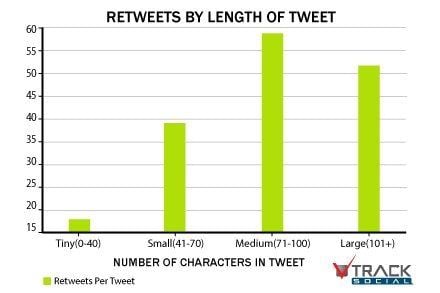
The ideal length of a Facebook post is less than 40 characters
Forty characters is not much at all. (The sentence I just wrote is 35 characters.)
But 40 is the magic number that Jeff Bullas found was most effective in his study of retail brands on Facebook. He measured engagement of posts, defined by “like” rate and comment rate, and the ultra-short 40-character posts received 86 percent higher engagement than others.
The 40-character group also represented the smallest statistical set in the study (only 5 percent of all posts qualified at this length), so best practices on Facebook also include the next most popular set: Posts with 80 characters or fewer received 66 percent higher engagement.

Many different studies over the years have confirmed that shorter posts are better on Facebook. One such study by BlitzLocal looked at nearly 120 billion Facebook impressions and found that performance tailed off as posts grew longer. Their particular data found significant advantages to question posts between 100 to 119 characters.

The ideal length of a Google+ headline is less than 60 characters
To maximize the readability and appearance of your posts on Google+, you may want to keep your text on one line. Demian Farnworth of Copyblogger studied the Google+ breaking point and found that headlines should not exceed 60 characters.
Here is an example of what we mean. The post below had a headline exceeding 60 characters and got bumped.
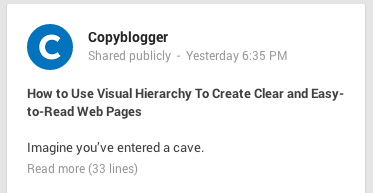
This post kept the title within 60 characters and stayed on one line.
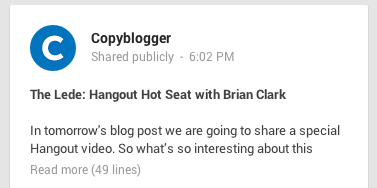
Demian’s advice goes even deeper. If your Google+ headline simply can’t be contained in one line, then you can turn to Plan B. Write a superb first sentence.
In the last update, Google changed the layout of posts so that you only see three lines of the original post before you see “Read more” link. In other words, your first sentence has to be a gripping teaser to get people to click “Read More.”
Here is Demian’s killer example:
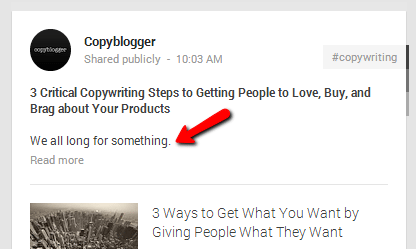
In terms of overall post length, Google+ posts average 156 characters, according to Qunitly Research. Digging further, Quintly found the largest spike in engagement at posts of 5 characters in length and the second-highest spike in posts of 442 characters. Takeaway: You can write a lot longer on Google+ and still find great results.
The ideal length of a headline is 6 words
How much of the headline for this story did you read before you clicked?
According to a post by KISSmetrics, you might not have read it all.
Writing for KISSmetrics, headline expert Bnonn cites usability research revealing we don’t only scan body copy, we also scan headlines. As such, we tend to absorb only the first three words and the last three words of a headline. If you want to maximize the chance that your entire headline gets read, keep your headline to six words.
Of course, six-word headlines are rare (and hard to write!). If you can’t cut your title down to six words, you can still be aware of how your headline might be read, and you can adjust accordingly. As the KISSmetrics post says:
Of course, that’s seldom enough to tilt the specificity-meter into the red. And I have it on good authority that some of the highest-converting headlines on the web are as long as 30 words. As a rule, if it won’t fit in a tweet it’s too long. But let me suggest that rather than worrying about length you should worry about making every word count. Especially the first and last 3.
The ideal length of a blog post is 7 minutes, 1,600 words
When measuring the content that performs best on their site, Medium focuses not on clicks but on attention. How long do readers stick with an article?
In this sense, an ideal blog post would be one that people read. And Medium’s research on this front says that the ideal blog post is seven minutes long.

To arrive at this number, Medium measured the average total seconds spent on each post and compared this to the post length. All Medium posts are marked with a time signature for how long the read should be. After adjusting their analysis for a glut of shorter posts (overall, 74% of posts are under 3 minutes long and 94% are under 6 minutes long), they came to their conclusion:
And there we have it: the average total seconds rises for longer posts, peaks at 7 minutes, and then declines.And in terms of word count, a 7-minute read comes in around 1,600 words.
(A photo-heavy post could bring the average down closer to 1,000. Medium’s seven-minute story on ideal post length was filled with images and graphs and contained 980 words.)
SerpIQ examined the question of ideal post length from an SEO perspective. They looked at the top 10 results on search results pages and counted the words in each article. Their data included text in the sidebars of posts, so you can knock a few words off of the totals below.

Of course, as with any of these ideal lengths, the answers you find here could very well be taken as “it depends,” since research varies from site to site. For instance, Moz found that longer posts on their blog get linked to more often, and Upworthy found little correlation between length and attention when they tested Medium’s hypothesis for themselves. (Upworthy cited factors like type of posts and audience as a couple of possible explanations for the discrepancy.)
Perhaps the best takeaway here is this, borrowed from the conclusion of Medium’s study:
What it does mean is that it’s worth writing however much you really need. Don’t feel constrained by presumed short attention spans. If you put in the effort, so will your audience.
The ideal width of a paragraph is 40-55 characters
I know, I know. Width and length aren’t the same thing, but I just couldn’t resist this interesting take. Social media expert Derek Halpern found that there are a pair of very important, underlying factors that go into the width of your content:- Content width can give the appearance of simplicity or complexity
- Content width is key to maximizing reader comprehension
The ideal paragraph length, in this sense, would appear simple to the reader and allow for easy reading. Halpern believes he found the window where this happens.
The problem is, to ensure maximum comprehension and the appearance of simplicity, the perfect line length ranges between 40 and 55 characters per line, or in other words, a content column that varies between 250-350 pixels wide (it depends on font size and choice).
Forty and 55 characters per line means about 8 to 11 words. If you’re viewing the Buffer blog in a desktop browser, you’re likely seeing up to 20 words per line. Whoops!
You may have noticed many sites online that have a different font for their lead paragraph than they do for the remainder of their text. Would you believe there is psychology at play here? Consider that shorter lines appear as less work for the reader; they make it easier to focus and to jump quickly from one line to the next. Opening paragraphs with larger fonts—and therefore fewer characters per line—are like a a running start to reading a piece of content. This style gets readers hooked with an easy-to-read opening paragraph, then you can adjust the line width from there.
Here’s an example from Smashing Magazine:
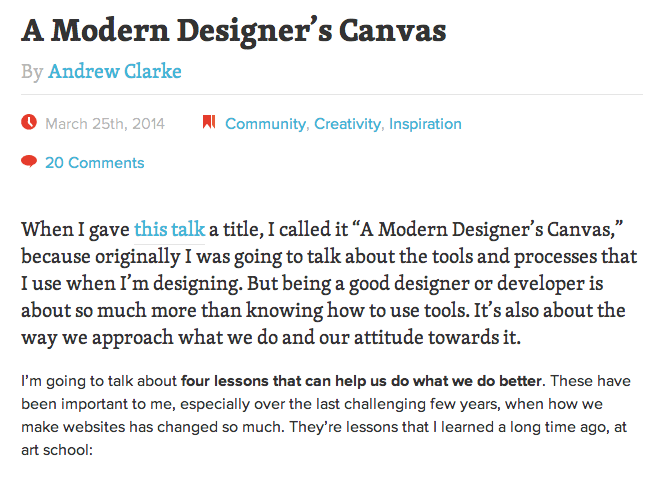
The ideal length of an email subject line is 28-39 characters
In September 2012, MailChimp published the following headline on its blog: Subject Line Length Means Absolutely Nothing. This was quite the authoritative statement, but MailChimp had the data to back it up.
Their research found no significant advantage to short or long subject lines in emails. Clicks and opens were largely the same.

By this token, you are likely to be okay writing an email of any length (and always better off being specific and helpful with the subject you write, regardless of how many words you use). That being said, other research hints at a sweet spot: 28-39 characters.
A study released by Mailer Mailer around the same time as MailChimp’s study found a slight bump in opens and clicks at a certain range of characters. Here is their analysis:
- 4–15 characters: 15.2% open; 3.1% click
- 16–27 characters: 11.6% open; 3.8% click
- 28–39 characters: 12.2% open; 4% click
- 40–50 characters: 11.9% open; 2.8% click
- 51+ characters: 10.4% open; 1.8% click
The stat is one of the few of its kind to show a demonstrative (but not overwhelming) difference in subject line lengths. Litmus referenced this study in their popular subject line infographic. If there were ever to be a recommended length for a subject based on research, this would be it.
Beyond the perfect length, you can also adhere to best practices. In general, a 50-character maximum is recommended, although MailChimp does point out that there can be exceptions:
The general rule of thumb in email marketing is to keep your subject line to 50 characters or less. Our analysis found this to generally be the rule. The exception was for highly targeted audiences, where the reader apparently appreciated the additional information in the subject line.
At Buffer, we tend toward the upper threshold of the 50-character limit and often go beyond.
Of course, you can always just learn from those who do it best and those who do it worst. In MailChimp’s studies they came across some especially high performers—and some low performers.
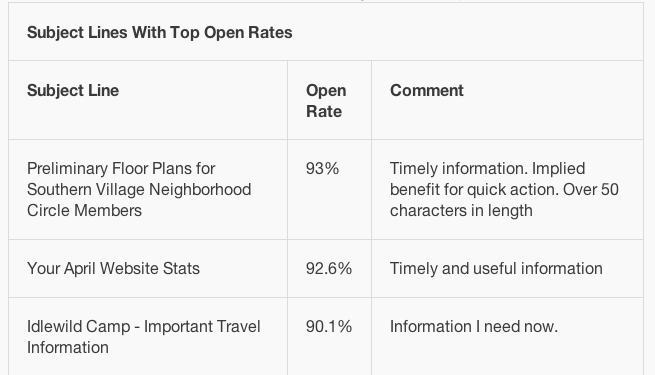

The ideal length of a presentation is 18 minutes
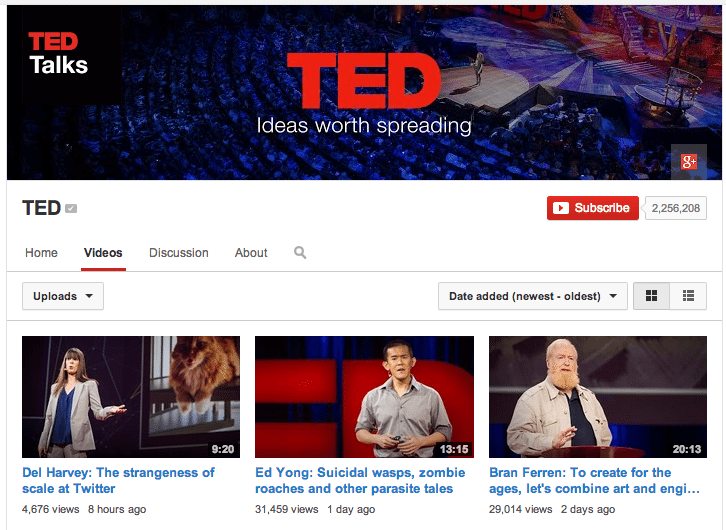
Organizers of TED have found that 18 minutes is the ideal length of a presentation, and so all presenters—including Bill Gates and Bono—are required to come in under this mark.
The science behind this 18-minute mark comes from studies of attention spans. Scientists seem to agree on a range of 10 to 18 minutes for how long most people can pay attention before they check out. The physiological reason behind this is that new information must be processed by the brain, resulting in a huge use of glucose, oxygen, and blood flow as brain neurons fire and burn energy. This loss of energy leads to fatigue.
Carmine Gallo, writing on LinkedIn, pointed to even more scientific research at the root of this attention-time phenomenon. Gallo wrote of Dr. Paul King of Texas Christian University who likens the act of listening and absorbing information to lifting weights: The more we are asked to take in, the heavier and heavier the load gets. Eventually, we can’t hold the weight anymore, and we drop it all – or forget it all.
King tested this on graduate students, observing that those who went to class three days a week for 50 minutes recalled more information than those who went to class one day a week for three hours.
Science is a nice reason to put a limit on presentations, but if you’re sharing yours online or looking for virality, there could be other important factors, too. Here is what TED curator Chris Anderson thinks:
It [18 minutes] is the length of a coffee break. So, you watch a great talk, and forward the link to two or three people. It can go viral, very easily. The 18-minute length also works much like the way Twitter forces people to be disciplined in what they write. By forcing speakers who are used to going on for 45 minutes to bring it down to 18, you get them to really think about what they want to say. … It has a clarifying effect. It brings discipline.
The ideal length of a title tag is 55 characters
Title tags are the bits of text that define your page on a search results page. Brick-and-mortar stores have business names; your web page has a title tag.
Recent changes to the design of Google’s results pages mean that the maximum length for titles is around 60 characters. If your title exceeds 60 characters, it will get truncated with an ellipse. The design change can be seen below where a formerly ideal title has now been truncated.

Finding a hard-and-fast rule for the maximum recommendation of a title tag isn’t as easy as you’d think. Quick typography lesson: Google uses Arial for the titles on its results pages, Arial is a proportionally-spaced font, meaning that different letters take up different width. A lowercase “i” is going to be narrower than a lowercase “w.” Therefore, the actual letters in your title will change the maximum allowable characters that can fit on one line.
Moz dug deep to see where exactly this maximum character limit surfaced for truncated titles. They found that 55 characters seemed to be the breaking point as a general rule.
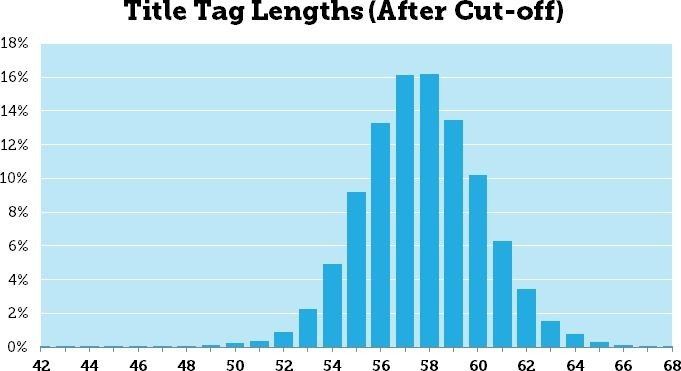
The ideal length of a domain name is 8 characters
This one may not apply to all of you, but if you’re trying to name your startup it’s a useful find. According to Daily Blog Tips, these are the characteristics of a good domain name:
- It is short
- It is easy to remember
- It is easy to spell
- It is descriptive or brandable
- It does not contain hyphens and numbers
- It has a .com extension
Daily Blog Tips also found the ideal length. They ran an Alexa report that looked at the domains for the top 250 websites. The results: Over 70 percent of the sites had domain names of 8 characters or less, and the average number of characters per domain was just over 7.

Recap
For the tl;dr version of this article on ideal length, here’s a graphic that encompasses all the guidelines mentioned above.

What lengths have you found work best for you? I’d be keen to hear your thoughts in the comments.
Image credits: fstoaldo, Orbit media, Track Social, Jeff Bullas, BlitzLocal, Copyblogger, Medium, MailChimp, Moz, Daily Blog Tips.
Try Buffer for free
140,000+ small businesses like yours use Buffer to build their brand on social media every month
Get started nowRelated Articles

In this article, Nupur Mittal shares insights into four research methods that help her find content ideas and identify unique takeaways.

Facebook marketing in 2019 isn’t dead. On the contrary, it’s far from it. Now removed from the dim outlook that businesses faced at the beginning of 2018, Facebook has and will remain an essential tool for brands’ marketing strategies moving forward. In our big State of Social Media 2019 Report, we found that 93.7 percent of businesses use and are currently active on Facebook — the most among any other social media network. And although we continue to see a dramatic rise in the usage

